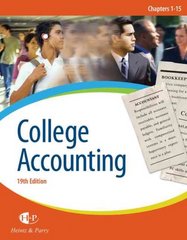address the following problems fully
A life office issues term assurance policies to 500 lives all aged 30 exact with a term of 25 years. The benefit of $10,000 is payable at the end of the year of death of any of the lives into a special fund. Calculate the expected share of this fund for each survivor after 25 years. Basis: Mortality AM92 Select Interest 4% per annum 141 A life office has issued for a number of years whole-life regular premium policies to a group of lives through direct advertising. Assured lives are only required to complete an application form with no further evidence of health. Outline the forms of selection that the insurer should expect to find in the mortality experience of the lives. [5] (i) Show that [2] (ii) Prove Thiele's differential equation for a whole-life assurance issued to a life aged * to be as follows: [4] [Total 6] (i) Calculate the expected present value of an annuity-due of 1 per annum payable annually in advance until the death of the last survivor of two lives using the following basis: First life: male aged 70, mortality table PMA92C20 Second life: female aged 67. mortality table PFA92C20 Rate of interest: 4% per annum 121 (ii) Give an expression for the variance of the annuity-due in terms of annuity functions [5] [Total 7]A life insurance company issues a 3-year unit linked endowment policy to a life aged 15 exact under which level premiums are payable yearly in advance. In the Ist year, 35% of the premium is allocated to units and 105% in the 2nd and 3rd years. The units are subject to a bid-offer spread of 5% and an annual management charge of 0.5%% of the bid value of units is deducted at the end of each policy year. Management charges are deducted from the urit fund before death and surrender benefits are paid. If the policyholder dies during the term of the policy, the death benefit of the bid value of the units is payable at the end of the year of death. The policyholder may surrender the policy only at the end of each year. On surrender or on survival to the end of the term, the bid value of the units is payable at the end of the year of exit. The company uses the following assumptions in its profit test of his contact: Rate of growth on assets in the unit fund 5 per annum Rate of interest on non-unit fund cash flows 4% per annum Independent rates of mortality AM92 Ultimate Independent rates of withdrawal 56 per annum Initial expenses E250 Renewal expenses $50 per annum on the 2nd and 3rd premium dates Initial commission 20% of 1st premium Renewal commission 2.5% of the 2nd and 3rd years' premiums The company sets premiums so that the net present value of the profit on the policy is 15% of the annual premium (i) Using a risk discount rate of 8% per annum, calculate the premium for the policy on the assumption that the company does not zeroise future expected negative cash flows. [121 (ii) Explain why the company might need to zeroise future expected negative cash flows on the policy [2] [Total 14]








